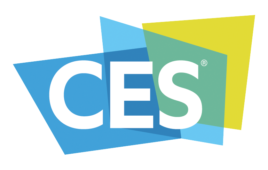
Cancer cell illustration [Image from MIT]
The sensors are designed to detect hydrogen peroxide in human cells, which could help researchers determine new cancer drugs that increase levels of hydrogen peroxide that can start the programmed cell death. The researchers suggest that the sensors could also be used to screen tumors to predict if certain drugs would be effect against them.
“The same therapy isn’t going to work against all tumors,” Hadley Sikes, an associate professor of chemical engineering at MIT and senior author on the study, said in a press release. “Currently, there’s a real dearth of quantitative, chemically specific tools to be able to measure the changes that occur in tumor cells versus normal cells in response to drug treatment.”
Cancer cells can have mutations that make their metabolism go wrong and create high levels of hydrogen peroxide. If too much of the molecule is creates, cells can become damage. Therefore, cancer cells depend a lot on antioxidant systems that remove hydrogen peroxide from cells.
Redox drugs target the vulnerability and can disable antioxidant systems or boost production of hydrogen peroxide. Many redox drugs are in clinical trials and have shown mixed results.
“One of the problems is that the clinical trials usually find that they work for some patients and they don’t work for other patients,” Sikes said. “We really need tools to be able to do more well-designed trials where we figure out which patients are going to respond to this approach and which aren’t, so more of these drugs can be approved.”
The research team wanted to develop a sensor that could detect hydrogen peroxide inside human cells to allow scientists to measure a cell’s response to different drugs.
Current hydrogen peroxide sensors use proteins called transcription factors that are taken from microbes and engineered to fluoresce when they react with hydrogen peroxide. When the researchers tried to use the proteins in human cells, they found they were not sensitive to the levels of hydrogen peroxide they were trying to detect, which led the researchers to try and find human proteins that could perform the same task.
The researchers discovered an enzyme called peroxiredoxin can dominate most human cell reactions with the hydrogen peroxide molecule. One of the enzyme’s main functions is to sense changes in hydrogen peroxide levels. The team modified the protein and added two fluorescent molecules to it, a green fluorescent protein and red fluorescent protein on each end. The sensor changes shape when it reacts with hydrogen peroxide and brings the two fluorescent proteins closer together. This allows the researchers to detect if the shift has occurred by shining green light onto the cells. According to the researchers, the glow will remain green if no hydrogen peroxide is detected and the sensor will glow red if there is.
The researchers then tested the sensor in two types of human cancer cells that they knew were susceptible to a redox drug known as piperlongumine and another type of cancer cell that they knew was not susceptible to the drug. The sensor showed that hydrogen peroxide levels did not change in resistant cells, but increased in susceptible cells.
Sikes suggests that the sensor has the potential to be used in two major ways. One of the applications includes screening libraries of existing drugs or compounds that have the potential to be used as drugs to see if they could have the desired effect of increasing hydrogen peroxide concentration in cancer cells. The other use could be to screen patients before they receive redox drugs to see if the drugs could successfully target tumors.
“You have to know which cancer drugs work in this way, and then which tumors are going to respond,” Sikes said. “Those are two separate but related problems that both need to be solved for this approach to have practical impact in the clinic.”
The research was published in the journal Nature Communications and was funded by the Haas Family Fellowship in Chemical Engineering, the National Science Foundation, a Samsung fellowship and a Burroughs Wellcome Fund Career Award at the Scientific Interface.




